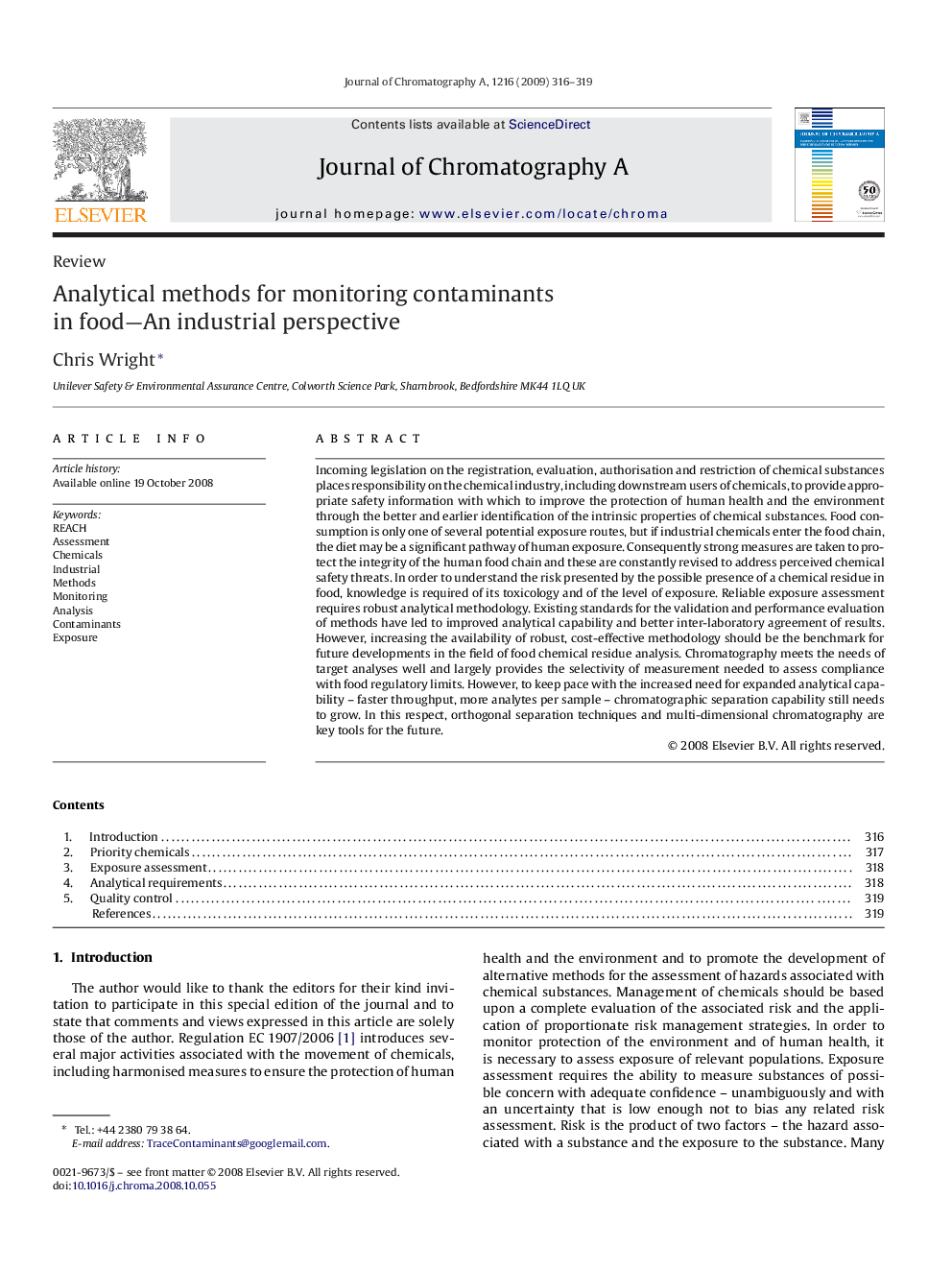| کد مقاله | کد نشریه | سال انتشار | مقاله انگلیسی | نسخه تمام متن |
|---|---|---|---|---|
| 1210758 | 965405 | 2009 | 4 صفحه PDF | دانلود رایگان |

Incoming legislation on the registration, evaluation, authorisation and restriction of chemical substances places responsibility on the chemical industry, including downstream users of chemicals, to provide appropriate safety information with which to improve the protection of human health and the environment through the better and earlier identification of the intrinsic properties of chemical substances. Food consumption is only one of several potential exposure routes, but if industrial chemicals enter the food chain, the diet may be a significant pathway of human exposure. Consequently strong measures are taken to protect the integrity of the human food chain and these are constantly revised to address perceived chemical safety threats. In order to understand the risk presented by the possible presence of a chemical residue in food, knowledge is required of its toxicology and of the level of exposure. Reliable exposure assessment requires robust analytical methodology. Existing standards for the validation and performance evaluation of methods have led to improved analytical capability and better inter-laboratory agreement of results. However, increasing the availability of robust, cost-effective methodology should be the benchmark for future developments in the field of food chemical residue analysis. Chromatography meets the needs of target analyses well and largely provides the selectivity of measurement needed to assess compliance with food regulatory limits. However, to keep pace with the increased need for expanded analytical capability – faster throughput, more analytes per sample – chromatographic separation capability still needs to grow. In this respect, orthogonal separation techniques and multi-dimensional chromatography are key tools for the future.
Journal: Journal of Chromatography A - Volume 1216, Issue 3, 16 January 2009, Pages 316–319